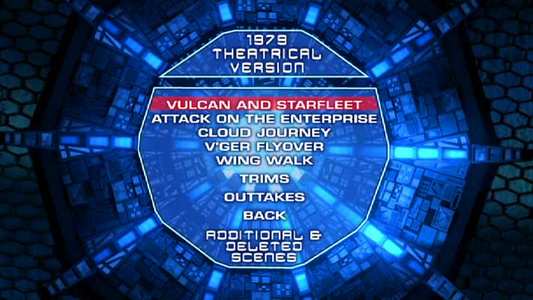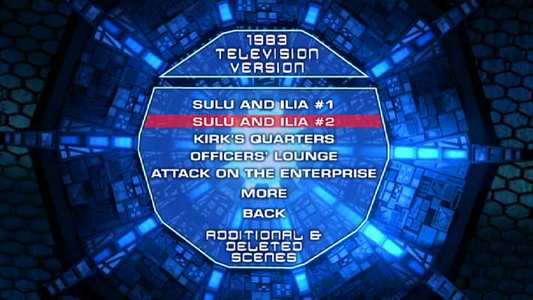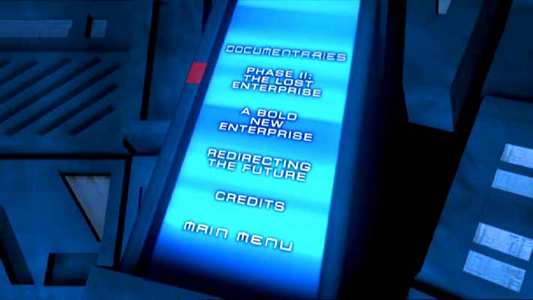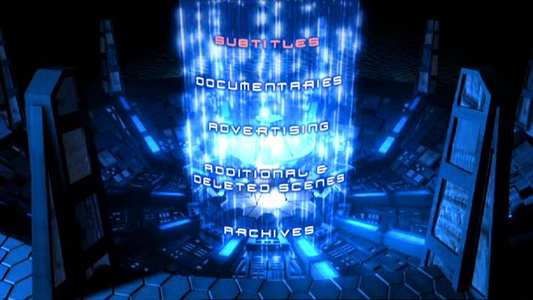Review of Star Trek: The Motion Picture The Director`s Edition
Introduction
A long time ago in a galaxy...Oops! sorry that`s the other one. Let`s try again...Space the final frontier. These are the voyages of the starship Enterprise. It`s ongoing mission to seek out new life forms and new civilisations. To boldly go where no one has gone before!
There`s probably not a person on the planet who wouldn`t recognise that intro, the intro to Star Trek. That`s the new version, updated and politically correct for the Next Generation spin-off. But lets travel back to a time when the original Star Trek show had a small cult following and only managed a four year TV first run in the U.S. It looked like the franchise was doomed and regarded as nothing more than another shlock Lost in Space type series.
The real turning point for the show was its syndication. Previously most people in the states had missed the series due to its late schedule and lack of overall country coverage. Now the local stations had it and slotted it into their early evening viewing times. More people were getting to see Gene Roddenberry`s vision of the future with undertones of the current world political climate. Star Trek now had a fan base and had been lifted from cult status to one of the most popular, world wide syndicated TV shows of all time. Fans soon cried out for a second series and Paramount knew they needed to keep the franchise going, but how! Gene Roddenberry wasn`t keen to return to Star Trek at first but with the smash success of George Lucas`s Star Wars in 1978, sci-fi was hot property.
From the ashes of what had been deemed a failure rose the concept of Star Trek - Phase II. Pre-production was greenlit on this project, with principal casting and set design a priority. They needed a new look for a new era, but the huge obstacle to overcome was the lack of interest in returning to this project by one Leonard Nimmoy, Spock. Feeling the show would no go down well with fans if missing a pivotal crew member they looked to a possible replacement and then movie version. Nimmoy was soon on board and most of the phase II cast moved over to what was now Star Trek - The Motion Picture.
With it`s lack of the current Star Wars style action it gained mixed reviews on initial release, but mirrored the early cult success of the TV show. Fans still wanted another TV series and in the mid-eighties The Next Generation was spawned , and the rest is history.
I still rate this as the best Star Trek movie and it is the highest grossing of the series. It does lack the traditional nemesis like Khan in The Wrath of Khan and the explosive battle scenes in the newer Next Gen. movies. But this movie has style and substance, with an underlying and believable plot about man and machine and our search to find life on other planets. Would we really want to meet whatever is out there?
The main problem was that STTMP was a rush-job. It wasn`t what the director had intended and many scenes were dull in comparison to the elaborate storyboards the director originally intended to follow. So what does a director do in this situation? Simple he does a Lucas and revisits his early work and gives it a face lift. He knocks out some bits here and adds new ones there. He creates new or replaces effects senes with seemless CGI. It now really is a gem and if you weren`t a fan before I suggest you revisit this movie again as I`m sure you will appreciate it this time around in all its director intended glory.
But how does this double disc special edition stand...

Video
Disc one contains the movie in the anamorphic 2:35.1 widescreen format. Older versions of this movie often looked muted and dull with an over abundance of grain.
These were usually pan and scan versions but even the Pioneer laserdisc release, in widescreen, suffered with the same complaints.
Also the problem with STTMP is its age and the type of effects used. Back in the bad old days, before CGI, we had optical effects. These effects were produced as separate bits of effects similar to a digital effects today and composited with the original live action piece. But as many new films are produced digitally these days we can add digital effects and get little or no degradation in the live action shots. In the days of STTMP they had to overlay pieces of film in layers, therefore the more layers you overlay the more degradation you get on the original live action pieces. This leads to more grain, trapped dirt etc.
This said, this version does look remarkably good but still has alot of grain and dirt in the effects sequences that is hard to get rid of. The image is a little on the soft side but colours remain bright and vivid. The contrast is also a bit dull with shadow delineation a problem where mattes or composite effects are present. Whites are bright but do have some haloing and there is only a small amount of macro blocking artifacts in areas of solid colour, but this isn`t distracting.

Audio
This is an old film and has had some very ropey multiple showings on terrestrial TV. Most have had bad sound drop outs and have suffered from a lack of fidelity, dynamics and any good surround mix. All this has changed with this director`s edition now restored, remixed and re-scored.
The high pitched harshness is now non-existent and we now have a track with a fabulous dynamic range. We also get pin-point dialogue that is sharp and accurate an not like it`s being read through an old sock. The new DD5.1 surround mix is now enveloping and the re-score really punches through this time round. This is an strident mix that has great but subtle use of surrounds to create some fantastic ambient moments and a bass punch that almost matches newer movies. This is a movie that always needed great sound design but due to lack of time missed out. Now it has it and what a difference it makes!

Features
This captain`s log is jammed packed with some real nuggets, can I say that! The big bonus is of course the director`s cut of the film. This is great but I would have liked the chance to see the original theatrical version too. This has been done very well in the past via seamless branching techniques, but this gem of DVD technology seems to be passing the UK by. Films such as Terminator 2 and The Abyss in the U.S. relied on branching for their region 1 release but never got that treatment this side of the big pond.
Some nice animated menus lead us to the various sections. These are good looking but get a little boring after a while and take a few seconds to fully load to your selection.
In the documentaries menu we get three new features that would have been better joined. These are split into...
Star Trek Phase II:
This 14 minute documentary looks at the above mentioned possible TV series sequel and has interviews with cast, crew and producers on its initial development to its eventual shelving in favour of a movie. The original writers, Jon Pavoli and Harold Livingston plus Majel Barret Roddenberry, wife of Gene, plus other production staff recall the ups and downs of this momentus task and give insight into Roddenberry`s and Nimmoy`s reluctance to rejoin this new space venture.
A Bold New Enterprise:
This 31 minute piece looks at the original theatrical release of STTMP with talking heads from most of the principal cast and new interviews with director Robert Wise, actors Stephen Collins, Walter Koenig, and a rotund William Shatner. It also reflects on the hardships of the effects heavy movie with effects supervisors Douglas Trumbull and Richard Yuricich and the rush job of editing with Todd Ramsey and composer Jerry Goldsmith.
Redirecting The Future:
Finally we get a 15 minute section on what it took to bring this movie back to what the director intended. This is mostly down to the effects team lead by David C. Fein and Michael Matessino of Crew Foundation. They give a great but short description of how they seamlessly replaced old and outdated effects and rushed-off static mattes with some new CGI work. I believe most of the original effects were done by ILM and it does now show that smaller effects houses can do an equally good or better job with the aid of new computer technology.
Like I said these would have been better tagged together and do tend to finish abruptly just as you think their getting going.
The disc also contains an audio commentary with director Robert Wise, effects supervisors Douglas Trumball and John Dykstra, actor Stephen Collins and composer Jerry Goldsmith. I think this is much better than the documentaries but does seem to be a case of too many cooks. Wise is present most of the time mainly because the movie contains so many effects shots, but he doesn`t baffle us with science.
The subtitle text only fact track is also very informative and is a must for real Star Trek buffs. Michael Okuda, author of the Star Trek Encyclopedia gives some little snippets of Star Trek information that go from interesting to bizzare to the very anal.
We then get a selection of additional and deleted scenes. Most are in the 2.35:1 ratio and are there because most fans knew they existed and wanted to see them. First up are 5 deleted scenes from the 1979 theatrical release. All of these scenes are cut or reedited for the director`s edition but are shown here in their entirety. Also here is an 8 minute selection of trims.
The Outtakes section is better with a selection of camera tests including, amongst others, the much talked about Memory Wall scene. These are no-anamorphic widescreen with no sound. There`s also more deleted footage, with 11 scenes from the 1983 extended version that was only available on video or shown on TV in the U.S.
The U.S. call any bits of unused footage outtakes. Over here I regard outtakes as funny fluffed lines or scenes with the actors having a giggle. What is here is very straight faced and serious. Give us some insight into fun on the set of these movies, if there was any.
The Advertising section offers the usual trailers and TV spots plus a TV spot for the new Star Trek series Enterprise. There is also a storyboard gallery, but missing are any pictures of production or marketing material such as posters of press kits or movie merchandise.

Conclusion
I would have liked to have seen a TV readable script and an isolated score, but all in all this is a fine double disc set that doesn`t quite match titles like Terminator 2 or The Abyss in authoring quality but offers plenty of insight into this complicated production for basic fans and Trekkies. The main thing that stand out is DVDs ability to offer the viewer something new from older movies. Lucas started the trend in special edition rehashes with extra footage and cleaned up effects. This could be missused but there are still plenty of other great movies out there that could do with a Star Trek and Star Wars style make-over...Jaws anyone!
Your Opinions and Comments
Be the first to post a comment!